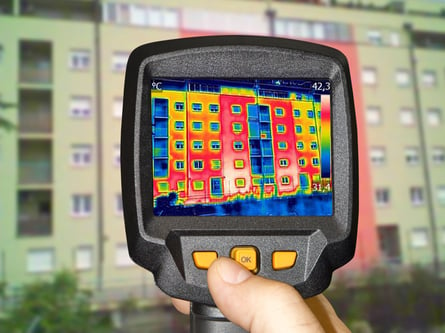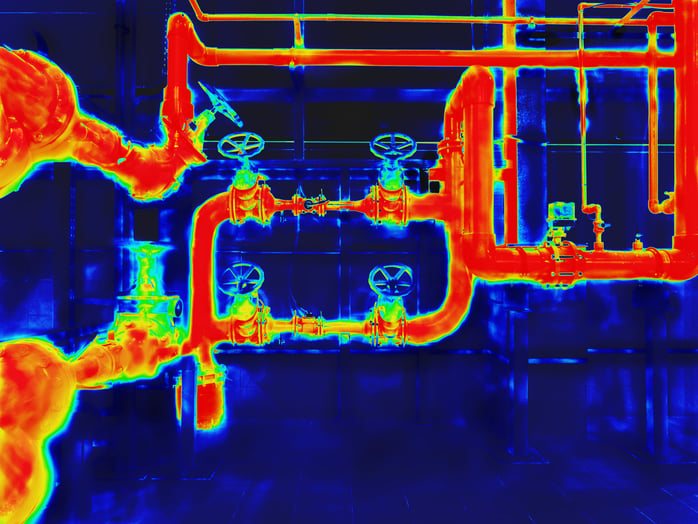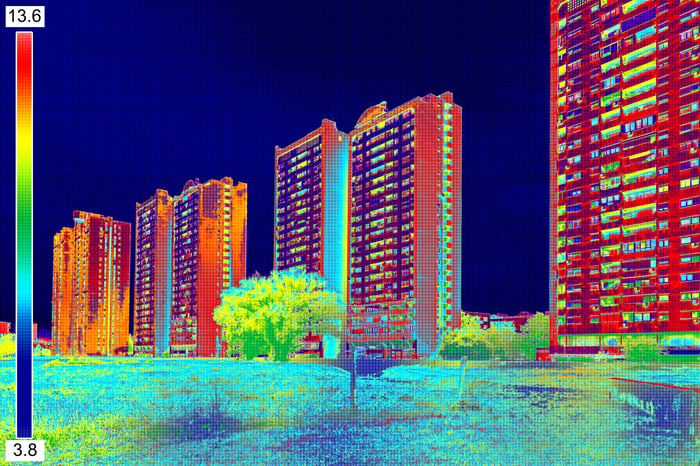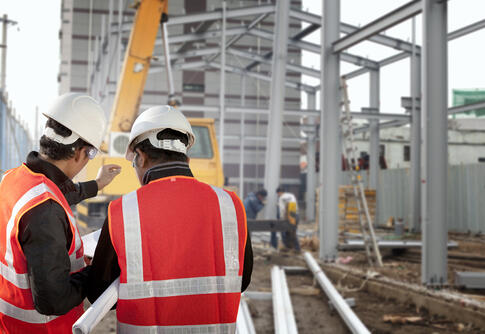Fight climate change and increase the sustainability of your net-zero building through our expertise on advanced energy simulations.
Sustainable Design
Apply the three spheres of sustainability on your building project for your holistic advantage and compliance on green building codes.
Cost-Efficient Option
Reduce the carbon footprint and energy consumption by increasing energy-efficient measures on your building services design.
BIM Technology
Integrate energy modeling on an aesthetic, functional and structural scale so you can recoup the all-in-one benefits of BIM.
Aim For Sustainable Design With Energy Modeling
In a world where non-renewable energy is finite, sustainability is all the rage now among the industry players in the Architecture, Engineering and Construction (AEC) market. We have seen how climate change drastically altered the built environment—all because of the cause-and-effect feedback loop of high-carbon buildings, greenhouse gas emissions, resource wastage and cities that are not cut out for energy-efficiency.

But times have changed, and New York City is one of the leading-edge pioneers in transforming its urban landscape to a sustainable one by 2030. And as it turns out, our forward-looking engineers have a definitive role to play since buildings itself account for almost all of the urban carbon footprint.
Although being a sustainable city might not be an easy feat on its own, we are one in instigating collective changes in the community—from architects in the design phase, to facility managers in the O&M stage, and code enforcers pushing for sustainable implementation of the green building codes.
It's worthy to note that this includes not only the new construction, but also existing buildings that are in need of retrofit, and when sustainability calls for enforcement, the former proves to be the easier path rather than the latter as you can just only start everything from scratch.
However, as engineers proposing sustainable change, we do not back down from this challenge. At New York Engineers, we utilize an arsenal of tools so we can deliver energy-efficient solutions: it all starts with energy modeling.
Three Pillars of Sustainability Explained in Energy Modeling Perspective
Enter the three spheres of environmental, economic and social—and you have sustainability right on the center core. For starters, you might have been operating under the assumption that sustainability only refers to the design itself. As early as now, our green engineers correct this misconception by showing you how the three pillars of sustainability work together for the holistic success of the community.
We give you the learning curve on how each sphere is interrelated to each other from the energy modeling standpoint:
- Environmental
Everything in biodiversity is interconnected—when you move one element, everything follows in ripple effect. Nature is a core component in sustainability where the dearth of it can lead to management, preservation, protection, or restoration to maintain the right equilibrium of the ecology.
Fossil fuel is one good example of finite resource which could be harmful to the environmental as well. To compensate for its non-renewable state, renewable sources such as hydropower, wind and solar energy are continuously being developed and incorporated in the energy modeling analysis of building structures.
- Economical
All sustainable roads lead to one of the other two bottomlines: cost. When your building project aims to target green design, you should consider how you can reap the maximum returns in your upfront sustainable investment through smart growth and long-term planning. All these forecasts and predictions on cost constraints can be made possible by our engineers through energy modeling combined with 5D BIM.
- Social
As sustainable engineers, our target goal when we implement energy modeling on your building projects is to transform your unusable spaces to zones that exude better quality of life. Enter function, safety, and comfort—we translate our technical engineering expertise for your immersive experience.
Here are only some of the few advantages that you can get from sustainability: tax breaks, carbon credits and public involvement. As you can see, sustainability is not a stand-alone design maxim. We work together with you, the project stakeholders, and all other industry-specific specialists so we can achieve a better, sustainable design for the future generations.
MEP Engineers Leverage Energy Modeling For Building Services Design

Now that we have settled the score on what sustainability really means, we delve deeper into its technical side—particularly on how green design directly translates to engineering sub-disciplines such as mechanical, electrical and plumbing systems. How exactly does energy modeling fit into all of this? Our environmentally-conscious engineers show you how we utilize energy modeling for your energy-efficient building services:
- Heating and cooling loads
- Photovoltaic solar analysis
- Daylighting simulations
- Solar radiation and heating
- Thermal energy simulation
Looking into all the energy modeling applications above, it's safe to say that the benchmark for optimal sustainable design is analyzing the key performance indicators for each building system.
Case in point, you need to know the baseline design requirements for HVAC systems before you begin to analyze the heating and cooling loads for each schedule zone. Even more so, glazing facades can also be optimized for sustainability once solar radiation is factored in—specifying them as double-glazed or triple-glazed panes.
On the side of the electrical engineers, knowing when to switch and automate your lighting system on and off based on the daylight presence can garner you higher energy savings and decreased utility bills. In a nutshell, energy modeling visualizations enable you to make design iterations until you get results that speak sustainability.
This is our key takeaway on why you need New York Engineers for your next sustainable endeavor: without engineering expertise, the energy modeling software is only as good as it can be.
Target LEED Certifications of Net-Zero Buildings with Energy Modeling

Earning the LEED (Leadership in Energy and Environmental Design) certification for your building project can cement your status in the sustainability realm.
If you want to pursue a net-zero and carbon-neutral building facility, you need to choose one of the four levels of certifications inclusive of:
- LEED Certified: 40 to 49
- LEED Silver: 50 to 59
- LEED Gold: 60 to 79
- LEED Platinum: 80 or more
Aside from that, LEED offers five certification pathways depending on your building project type.
Some of which include new construction and existing buildings for the first two items, respectively:
- LEED for Building Design and Construction (BD+C)
- LEED for Building Operations and Maintenance (O+M)
- LEED for Interior Design and Construction (ID+C)
- LEED for Homes
- LEED for Neighborhood Development (ND)
As MEP engineers, pushing the building envelope for energy-efficiency requires that we view your project from the micro-level of building services, to the macro-level of the overall point-rating systems for LEED. Despite being specialized on the accounts of MEP engineering, we need to collaborate with all project stakeholders including architects and construction managers so we can all be on the same sustainable page for your building's LEED certification.
Name indoor environmental quality, water efficiency, as well as energy and atmosphere as our specialized engineering forte. In a nutshell, we eliminate the sick building syndrome (SBS) on your building facility by designing optimal mechanical and electrical performance indicators such as indoor air quality, thermal comfort, interior lighting, daylight and acoustic performance. Next in line, we offset carbon on renewable energy production as well as indoor water use reduction.
All these advanced simulations are all made possible by energy modeling, and New York Engineers are the experts behind the wheel.
Energy Modeling Makes Way for Sustainable Steel Structure Design

Debunk the misconception that wood structure design sits on the crowning glory of sustainability. Truly, wood possesses some of the desirable energy-efficient characteristics, but when renewable source is at stake, wood is in no contest with steel. Steel is the most sustainable material, given its 100% recyclable state throughout its life cycle assessment (LCA).
Our proficient engineers give you the in-depth details of the cyclical flow of steel from start to no-end:
- Raw material acquisition
- Metal processing and production
- Manufacturing and fabrication of building components
- Site logistics, transport and delivery
- Steel construction, erection, assembly and installation
- Use phase for estimated 50 years
- Demolition and collection
- Steel separation and recycling
Every move of steel from cradle to grave calls for sustainability. Starting from the acquisition, what we do as expert engineers is to streamline your process from design studio to fabrication—making sure all long-lead steel components are modeled correctly in the energy simulation and manufactured precisely to implement value-engineering on your building project.
Any waste materials goes back into the cycle, and the ones that make it pass quality control are the ones transported and delivered, where we subject them again to mill test reports to verify their testing certification. As always, any steel crap which is not apt for construction use can be used by other metal industries such as stainless steel finishes or automotive.
For steel construction, we use our Revit model as a baseline reference in erecting the steel components of your building project—ensuring that each structural column and beams, together with bolts, nuts and washers are installed down to the most exacting structural specifications. Experience the functional and aesthetic use of steel construction once you occupy your building facility for operations and maintenance (O&M).
As your building project nears its end-of-cycle, other construction materials such as wood and concrete in comparison can't stand a chance of regressing back into the cycle due to wastage that are deemed biodegradable instead of recyclable.
Steel once again enters the life cycle, where 50-year construction and consumer crap from demolition can now be calibrated once again for steel reuse—effectively closing the loop with raw material acquisition and processing. Through the expertise of New York Engineers, our aim is to utilize construction materials that comply with sustainability from start to the end.
Saving Up On Building Life Cycle Costs With Energy Modeling
This means that from the design, to construction, operation and facilities management, you are better equipped to handle all your cost drivers such as:
- Construction cost estimation
- Quantity take-offs
- Bill of materials
It makes all the difference when you can control your project costs, as this also in effect gives you greater control points for your quality and schedule constraints. Even better when energy modeling is put into perspective. Say, HVAC system for example.
Diving straight into design without energy modeling simulations can effectively derail your project, as this goes to show that building performance analysis was not conducted—rendering your building project costly and not designed for sustainability.
Oppositely, energy modeling might garner you expensive upfront costs, but this will yield and recoup you maximum paybacks in the form of your HVAC system catering to the heating and cooling loads. This, in turn, will give you higher dual savings on technicality and function: value-engineered components are designed for long-term life with an added functionality of reduced utility bills.
This is why you need our technical expertise on engineering with a touch of sustainability: you are guaranteed that the advanced energy simulations will be carried on over from design to facilities management. We implement sustainability right from the start, and pass on the knowledge transfer to you through effective building management systems.
Visualizing Energy Modeling on Virtual Design and Construction
Since energy modeling is designed for BIM integration, and BIM is a prerequisite for VDC, you can now view your energy model simulations on an immersive visualization experience with the help of augmented reality or virtual reality.
Where before you are only left with a visual scale of daylight simulation, our engineers can now help you curate and get a feel of how each space will look like based on the sun-path orientation and shadows for each time zone.
New York Engineers Lead Sustainability with Energy Modeling
Scale up your sustainability efforts and invest on energy-efficient measures through our expertise on energy modeling. Learn more of how New York Engineers can target LEED certifications for your building project through our merger of sustainable engineering and technology.
Eigile
Moving the needle with mavericks.™

